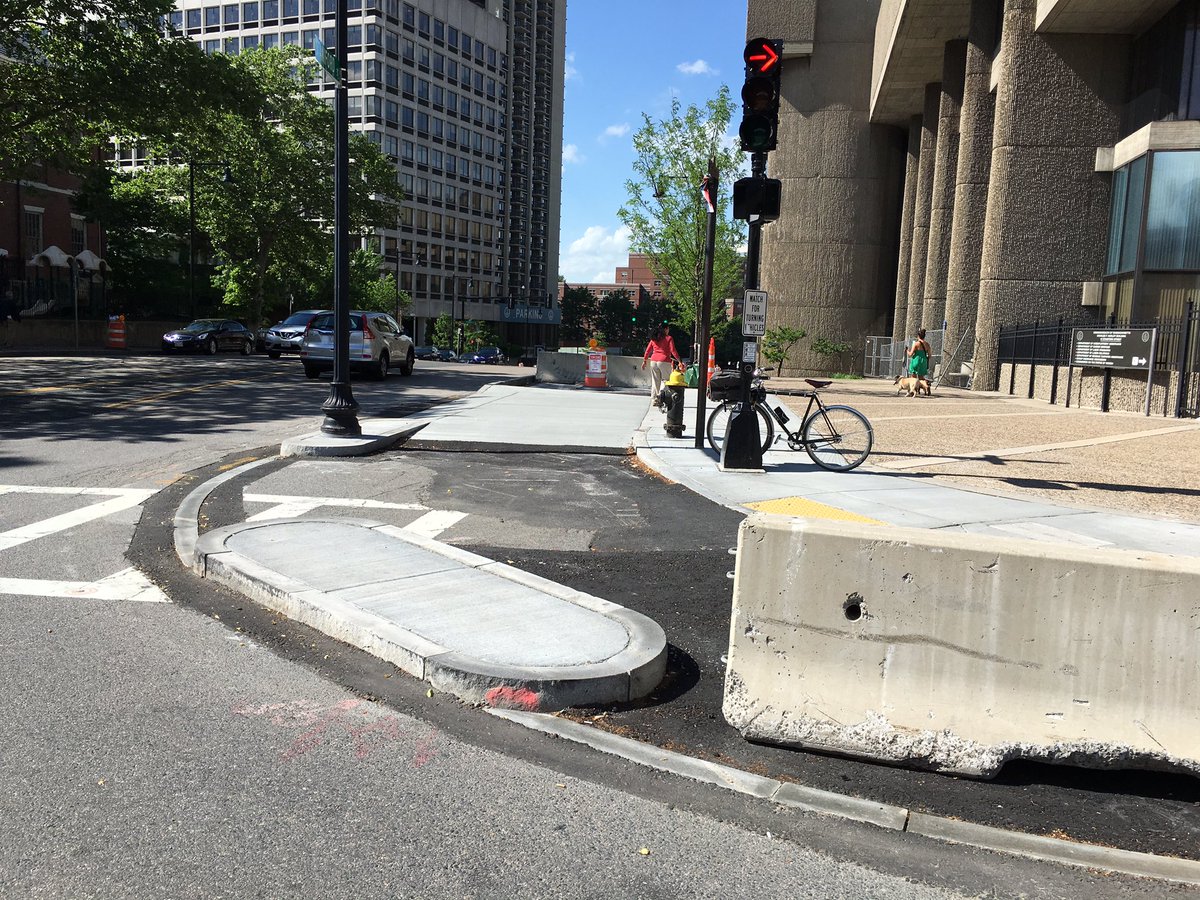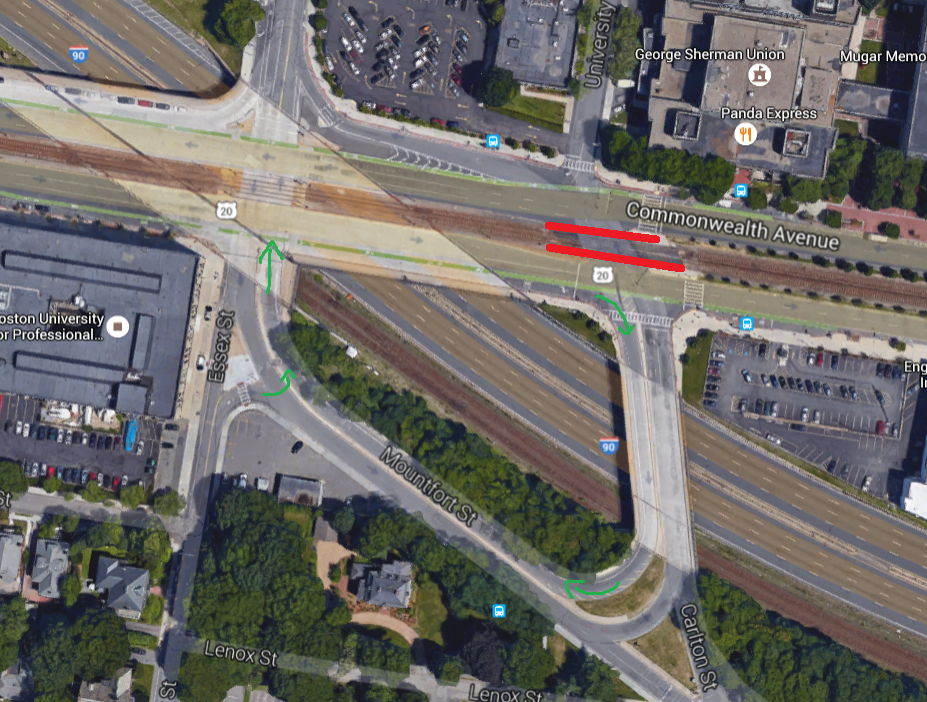Safety, parking concerns clash in Mass. Ave. bike lane debate
By Nicole Dungca Globe Staff June 16, 2016
The signs at Wednesday’s meeting characterized the question of whether to install new bike lanes on Massachusetts Avenue as fairly simple to answer: “Save Lives, Not Parking.”
But as the City of Boston prepares to install protected bike lanes — which will place posts between lanes meant for cars and cyclists — on a street that has seen some of the most fatal crashes in the city, some residents have raised questions about how many parking spots will disappear and how the plan might affect local businesses.
“When you try to correct one problem, you often run into unforeseen other problems,” said Arthur Ullian, owner of the Eliot Hotel on the corner of Massachusetts and Commonwealth avenues.
On Wednesday evening, most of the few hundred people packed into a room at St. Cecilia Parish on Massachusetts Avenue made it clear that they wanted the bike lanes — and they wanted them now.
Felipe Berho, a South End resident who once got hit by a car in the intersection of Massachusetts Avenue and Beacon Street, said he urged the city two years ago to consider changes on the street, long known as perilous for bikers. A year later, a 38-year-old Cambridge cyclist was fatally struck by a tractor-trailer in the same intersection.
“I feel like if they had done something quicker, she would be alive today,” he said. “We have to act more quickly.”
The city’s transportation officials have committed to installing protected bike lanes on the southbound side of Massachusetts Avenue from Beacon Street to St. Stephen Street, and on the northbound side from Boylston Street to the Christian Science Center near Huntington Avenue. The move, which will be done by the end of the year, is part of the city’s commitment to Vision Zero, a national initiative that aims to eliminate fatal crashes on city streets.
Becca Wolfson, executive director of the Boston Cyclists Union, said she would have liked to see the protected bike lane go even further down the street — a move that the city could consider after next year — but she applauded the city’s efforts.
“This plan doesn’t go as far as we’d originally hoped,” she said, “But we believe it’ll serve as a great short-term solution as they worked on a longer term solution.”
Yet even amid cheers from cycling and pedestrian advocates, some businesses and residents along the street felt strongly enough to rally customers and neighbors into signing a petition opposing the bike lane. Right now, the plan would get rid of about 18 legal parking spaces and six illegal spaces, out of nearly 345 spaces on the stretch of Massachusetts Avenue up to Harrison Avenue.
That worried Debbie Malone, who runs the Marlboro Market near Marlborough Street. Malone said there’s only one parking space right outside the market now, and the other parking spots across the street disappeared in 2011 to make way for a bus stop. She said that has slowed down business, particularly during Red Sox games.
“I want my friends who live outside the city to come in, but they don’t,” she said. “There’s nowhere to park.”
Ullian, who owns the Eliot Hotel, said the lanes could also affect business because customers getting dropped off would need to walk through the bike lane to get to the curb. Ullian, who uses a wheelchair, added that people with disabilities would also have trouble getting dropped off near such a bike lane.
Chris Osgood, the city’s chief of streets, and other city officials promised that they were aiming to include additional tweaks to the plan to address business concerns. The city plans to go “block by block” to decide on which commercial loading zones may be moved or what parking spaces will be taken away.
As a protected bike lane prepares to come to of the most dangerous sections for bikers and pedestrians in the city, cycling advocates already have their sights set on additional changes.
Michelle Cook, a cyclist with the Roxbury Rides group, asked officials about what protection cyclists can expect once they try to ride Massachusetts Avenue all the way to Dorchester: Regular cyclists know that the bike lanes on the street stop as soon as you head south of Melnea Cass Boulevard.
“What’s going to happen all the way to Columbia Road?” she said, to many cheers. “That’s what I want to know.”
Vineet Gupta, the city’s director of planning, said such plans may be in the works: The city will look at the section on Massachusetts Avenue past Melnea Cass Boulevard next year.
“We wanted to focus on the area of Massachusetts Avenue that had the most collisions because that’s the focus of the current effort to address safety,” he said.
The changes for Massachusetts Avenue won’t just involve bike lanes this year. In addition, the city will change the timing of traffic signals to give pedestrians more time before cars are allowed to turn into the crosswalk, paint crosswalks to become more visible, and restrict right turns on red lights. In addition, city officials are lobbying for changes to state law so that the default speed can be lowered to 25 miles per hour in the city, instead of the current 30.
To many longtime bike advocates, the changes couldn’t have come soon enough. Megan Ramey said it was “bittersweet” to learn of the new initiatives.
She had fought for the original bike lanes that were eventually added to the street, she said, but her family has since decided to move to Portland, Ore., after several near-death experiences while cycling in Boston.
“I hate to say it, but I don’t want to fight anymore with the city . . . and demand safe streets for my daughter to bike to school,” she said, before challenging the region to change the bike culture. “Our streets need to be happier places.”





